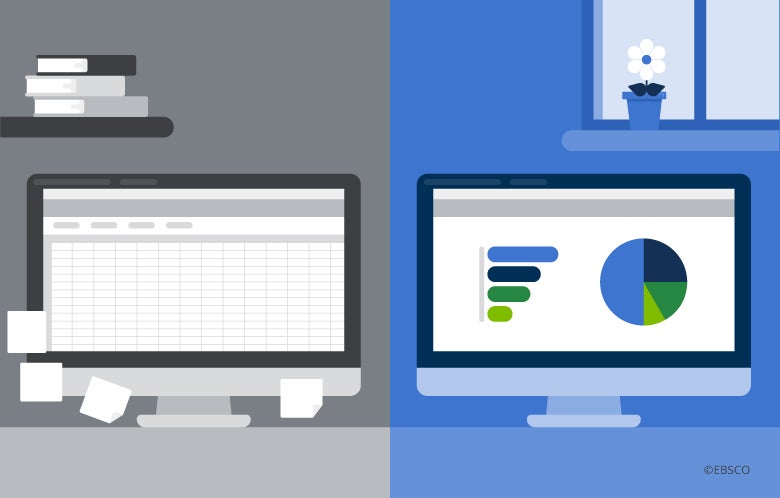The landscape of library data and analytics has evolved in two ways. As library staffs strive to prove their value to their academic institutions, the need for valid data about their services is just the start. First, understanding how they support student outcomes, faculty engagement, and interactions with other campus platforms and systems allows libraries to provide a holistic (and well-deserved) view into all they do to support the academic institution. Second, when it comes to obtaining library data, manual workflows, offline spreadsheets, and disparate file locations can no longer be the standard process.
The Vision for Visualization
The vision for an evolved library data platform includes a platform that collects and analyzes disparate library data sources to enable unique insights that will improve decision making within the library and beyond. Taking this notion a step further, library data platforms should also leverage modern data visualization tools that can instantly highlight important information. Data visualization is not just for efficient (and catchy) presentations. By leveraging a library data platform with enhanced visualization features, your library can detect trends, identify outliers, and begin to see a clear picture in areas that may need a deeper dive or more attention.
Leveraging a next-generation analytics tool that collects disparate sources and streamlines data into user-friendly dashboards is paramount to the success of the library and its preservation of accurate data.
Leveraging a next-generation analytics tool that collects disparate sources and streamlines data into user-friendly dashboards is paramount to the success of the library and its preservation of accurate data.
Bringing Together Content and Community
Most library data platforms up to this point have been used to examine and evaluate library content, collections, and usage. However, the library provides more than just access to content. As long as there are budgets and approvals, providing real-time library data can help your library receive the proper funds it deserves — but this means extending data to showcase the library’s influence on the success rate of students. Over the years, librarians have taken on the role of an information literacy educator and some studies have even shown that there is a link between student success and library usage. Utilizing a data platform that can tap into traditional library data, user behavior and outcome analytics (think accounts, authentication) along with library services data (e.g. reference and instruction), proves the library’s value beyond "just a place for research."
It Starts (and Ends) with Streamlining
One of the biggest challenges when it comes to data no matter the industry is proper analysis. Usually, the constant problem is that many data sets come from disparate systems and or departments and, therefore, are hard to properly sync and analyze. The library is no exception to this challenge. Leveraging a next-generation analytics tool that collects data from disparate sources and streamlines data into user-friendly dashboards is paramount to the success of the library.
EBSCO is developing a next-generation analytics platform with the intention of improving library data analysis so library staff can position libraries as leaders in analytics and potentially become a central hub for broader academic activities. Read the full press release to learn more about this effort.



